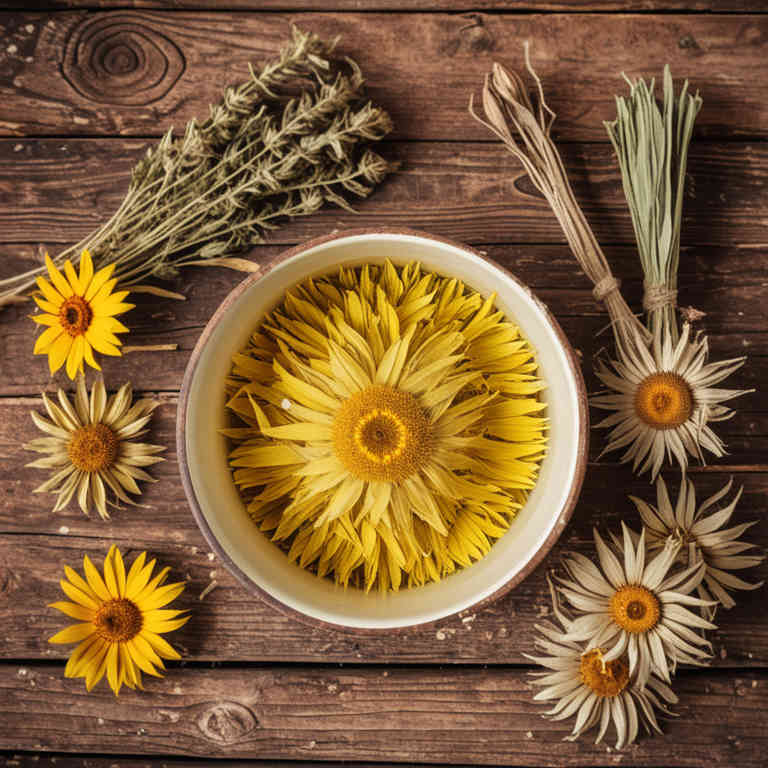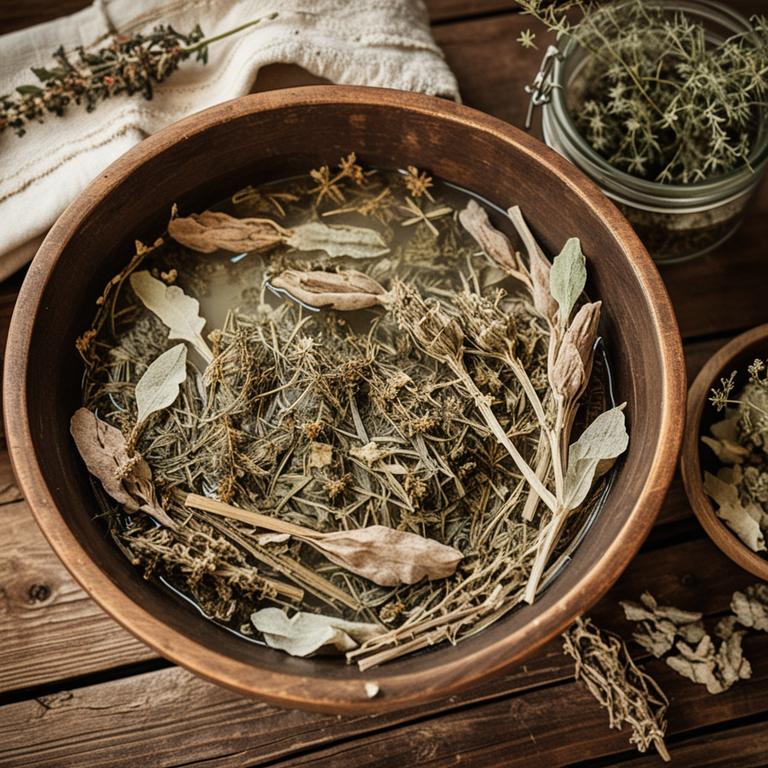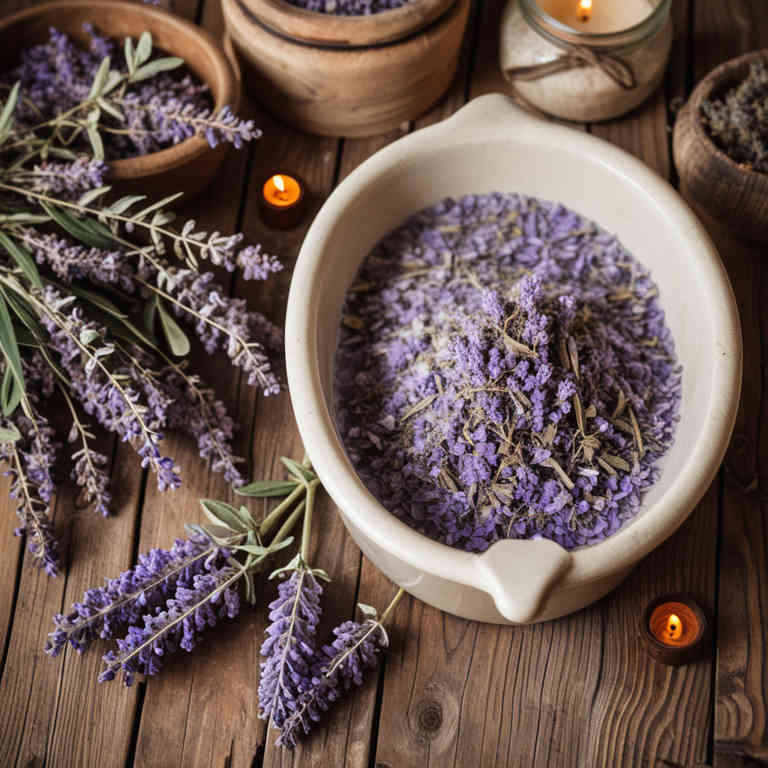10 Best Herbal Baths For Tendinitis

Herbal baths can be a soothing and effective complementary therapy for managing tendinitis by reducing inflammation and promoting relaxation.
Certain herbs, such as lavender, chamomile, and eucalyptus, are known for their anti-inflammatory and analgesic properties, which can help alleviate pain and stiffness in affected tendons. Soaking in a warm herbal bath for 15 to 20 minutes several times a week can improve blood circulation and accelerate the healing process. It is important to use safe, skin-friendly herbs and avoid any that may cause allergic reactions.
While herbal baths should not replace medical treatment, they can be a valuable addition to a holistic approach for managing tendinitis symptoms.
FREE Herb Drying Checklist
How to make sure every batch retains maximum flavor, color, and aroma without the risk of mold or over-drying. Eliminate guesswork and trial-and-error, making herb drying faster, easier, and more efficient every time.
Table of Contents
1. Urtica dioica

Urtica dioica, commonly known as stinging nettle, has been traditionally used in herbal baths to alleviate symptoms of tendinitis due to its anti-inflammatory and analgesic properties.
When prepared as a bath, the leaves of Urtica dioica can be steeped in warm water to release their beneficial compounds, such as flavonoids and minerals, which help reduce inflammation and soothe pain in affected tendons. The application of stinging nettle baths can improve circulation and promote tissue healing, making it a natural alternative for managing tendinitis. However, it is important to ensure the water temperature is comfortable and not too hot to avoid skin irritation.
While generally safe, individuals with allergies or sensitive skin should perform a patch test before using stinging nettle baths regularly.
2. Hypericum perforatum

Hypericum perforatum, commonly known as St. John's Wort, has been traditionally used in herbal baths for its potential anti-inflammatory and analgesic properties, which may help alleviate symptoms of tendinitis.
When infused into warm water, the active compounds in St. John's Wort, such as hypericin and hyperforin, can be absorbed through the skin, providing localized relief from pain and inflammation. These baths are often recommended as a complementary therapy to reduce swelling and promote healing in affected tendons. However, it is important to consult a healthcare professional before using St. John's Wort, as it may interact with certain medications.
Overall, herbal baths with Hypericum perforatum offer a natural approach to managing tendinitis, though their effectiveness can vary among individuals.
3. Arnica montana

Arnica montana herbal baths are a natural remedy often used to alleviate symptoms of tendinitis by reducing inflammation and promoting healing.
The active compounds in arnica, such as helenalin and other sesquiterpene lactones, have anti-inflammatory and analgesic properties that can help soothe painful joints and muscles. To prepare an arnica bath, a few drops of arnica essential oil or a commercially prepared arnica bath product are added to warm water, and the affected area is soaked for 15 to 20 minutes. While generally safe when used properly, arnica should be avoided on open wounds or broken skin, and individuals with allergies should consult a healthcare provider before use.
This herbal bath can be a complementary therapy to support recovery from tendinitis when used alongside other treatments.
4. Equisetum arvense

Equisetum arvense, commonly known as horsetail, has been traditionally used in herbal baths to alleviate symptoms of tendinitis due to its high silica content, which supports tissue repair and reduces inflammation.
When infused into warm water, horsetail can help soothe inflamed tendons and promote circulation, aiding in the recovery process. These baths are often recommended for their gentle yet effective approach, making them suitable for individuals seeking natural remedies. The anti-inflammatory and astringent properties of horsetail may also help reduce swelling and discomfort associated with tendinitis.
However, it is advisable to consult a healthcare professional before using horsetail baths, especially for those with existing medical conditions or allergies.
5. Salvia officinalis

Salvia officinalis, commonly known as sage, has been traditionally used in herbal baths to support the treatment of tendinitis due to its anti-inflammatory and analgesic properties.
When infused into warm water, sage can help reduce swelling and pain in inflamed tendons by promoting circulation and soothing muscle tension. The essential oils and phytochemicals in sage, such as rosmarinic acid, contribute to its therapeutic effects by inhibiting inflammatory pathways. Herbal baths with sage are often recommended as a complementary therapy alongside conventional treatments for tendinitis.
However, individuals should consult with a healthcare provider before using sage baths, especially if they have allergies or are taking medications.
6. Achillea millefolium

Achillea millefolium, commonly known as yarrow, has been traditionally used in herbal baths for its anti-inflammatory and soothing properties, which may offer relief for individuals suffering from tendinitis.
When infused into warm water, yarrow can help reduce swelling and pain in affected tendons by promoting circulation and easing muscle tension. The essential oils and compounds in yarrow, such as chamazulene and azulene, have demonstrated natural anti-inflammatory effects that support tissue healing. To prepare an herbal bath, a handful of dried yarrow can be steeped in hot water for several hours before being strained and added to a warm tub.
Regular use of yarrow baths may complement conventional treatments for tendinitis, though it is advisable to consult a healthcare professional before starting any new therapeutic regimen.
7. Lavandula angustifolia

Lavandula angustifolia, commonly known as English lavender, has been traditionally used for its soothing and anti-inflammatory properties, making it a valuable addition to herbal baths for individuals suffering from tendinitis.
When infused into bath water, lavender essential oil or dried lavender flowers can help reduce inflammation and alleviate pain by promoting relaxation and improving blood circulation to the affected areas. The calming aroma of lavender also aids in reducing stress, which is often linked to muscle tension and exacerbation of tendinitis symptoms. Regular use of lavender-infused baths may provide a natural, non-invasive method to support recovery and manage discomfort associated with tendinitis.
However, it is important to consult with a healthcare professional before incorporating herbal remedies into a treatment plan, especially for chronic or severe cases.
8. Cnicus benedictus

Cnicus benedictus, also known as blessed thorn, has been traditionally used in herbal baths for its potential anti-inflammatory and analgesic properties, which may help alleviate symptoms of tendinitis.
When infused into warm water, the plant's compounds are believed to reduce swelling and pain in affected tendons, promoting faster recovery. Herbal baths with Cnicus benedictus can be a soothing and natural alternative to conventional treatments, offering a holistic approach to managing inflammation. However, it is important to consult with a healthcare professional before using this remedy, especially if you have existing health conditions or are taking medications.
While some anecdotal evidence supports its use, more scientific research is needed to fully understand its efficacy and safety in treating tendinitis.
9. Rosmarinus officinalis

Rosmarinus officinalis, commonly known as rosemary, is a versatile herb that has been traditionally used for its therapeutic properties, including its potential benefits for tendinitis.
When used in herbal baths, rosemary can help reduce inflammation and alleviate pain by promoting blood circulation and soothing muscle tension. The essential oils derived from rosemary, such as 1,8-cineole and camphor, have anti-inflammatory and analgesic effects that may support the healing process of inflamed tendons. To prepare a rosemary herbal bath, one can steep dried rosemary in hot water and then add the infusion to warm bath water, allowing the skin to absorb its beneficial compounds.
While herbal baths can be a complementary therapy, they should not replace professional medical treatment for tendinitis, and it is advisable to consult a healthcare provider before incorporating them into a treatment regimen.
10. Vitex agnus-castus

Vitex agnus-castus, commonly known as chasteberry, has been traditionally used in herbal medicine for its potential anti-inflammatory and pain-relieving properties.
When incorporated into herbal baths, vitex can help reduce inflammation and soothe the affected areas in cases of tendinitis. The warm water enhances the absorption of the herb’s active compounds, promoting relaxation and improved circulation. Regular use of vitex herbal baths may support the body's natural healing process and alleviate discomfort associated with tendon inflammation.
However, it is advisable to consult with a healthcare professional before using any herbal remedy, especially for chronic or severe conditions.